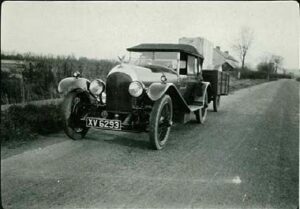
By December 1931, Pamphonic systems had already been installed in various London theatres, including a 60 Watt system at the Drury Lane Theatre for Noel Coward’s “Cavalcade”, which Coward nicknamed the “Pamplemousse”. The Colisseum Theatre received a larger, 120 Watt system. Nine theatres received systems within the first six months of operation, including Wyndham’s Theatre and the Royalty Theatre in London, and the Theatre Royal in Glasgow.
In addition to the theatres, public address systems, of a vast size for the day, were installed in London stadiums such as White City, Northolt Park, and the dog tracks at Walthamstow and Harringay. Other public address installations were made at large ice rinks, the Empire Pool, Wembley in London and at Shakespeare’s Theatre at Stratford.
Paul Taylor and Edgar Lavington went on to develop high fidelity sound systems which were installed in the palaces and castles of many of Europe’s Kings and Heads of State, stately homes, Ivagh House in Ireland (home of the Guinness family), Arundel Castle, Sledmere House, , Shakespeare’s Theatre at Stratford, and many other prestigious locations.
The reviewer in the Gramophone (December 1931) [link to pdf] commented “What struck me particularly … was the unusual purity of tone in orchestral records controlled from a whisper up to Queens Hall volume”.
The “Reproducer” was a great success and “…met with an enthusiastic reception from expert technicians, the entertainment industry and the music-loving public alike” (Industrial World May 1932) [link to pdf]
A typical system comprising turntable, amplifier and separate loudspeaker, housed in fabulous mahogany or walnut cabinets would have cost over £200 in 1932, equivalent to nearly £15,000 in 2020 money. Sadly, we can find no trace of any of these pre-war installations.
In 1932 Pamphonic appointed Keith Prowse, London’s pre-eminent Ticketing and Entertainment agency as sole distributors of Pamphonic Systems and they opened a sales showroom at Stratton Street off London’s Piccadilly.
In 1937, it is likely that Pye took a minority stake in Pamphonic Reproducers Limited. C.O. Stanley, MD of Pye appeared on the Pamphonic letterhead by 1938.